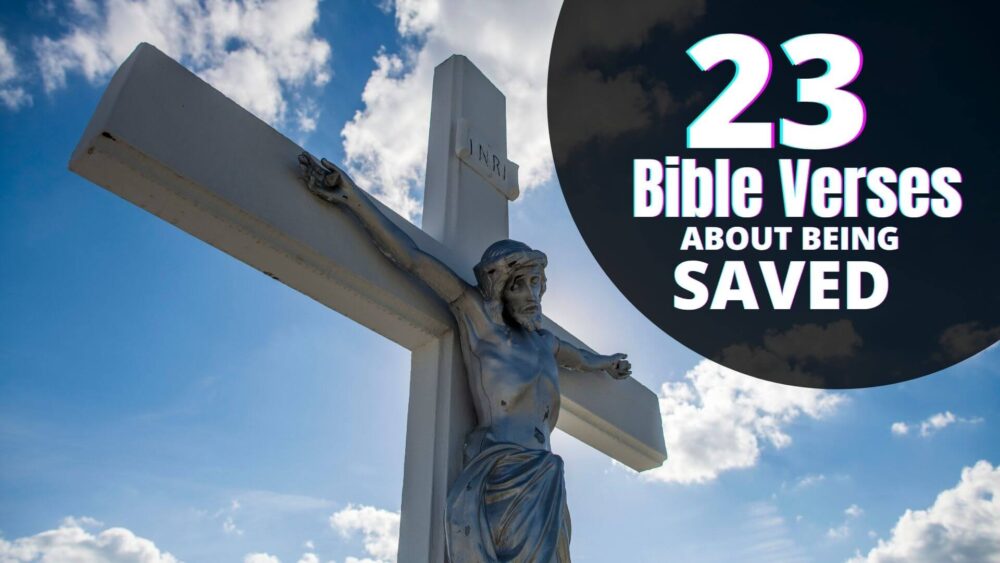Visions play a vital role in the Bible and are often used by God to communicate with His people. In this section, we will define visions according to the Bible and explore the difference between dreams and visions.
Definition of visions according to the Bible
As defined in the Bible, a vision is a supernatural experience in which a person sees something not present in the physical world. Visions can be experienced while awake or in a dream-like state and can be a means of divine communication.
In many cases, visions reveal God’s will or convey important messages to individuals or groups.
While visions are often associated with dreams, there is a biblical difference between the two. Dreams are more common and involve subconsciously processing information from the day or recent events. In contrast, visions are typically a deliberate communication from God, given to individuals to convey essential messages or reveal future events.
Understanding the difference between dreams and visions is important for interpreting the messages conveyed in the Bible. In the following sections, we will explore different types of visions found in the Bible, examples of visions, and the significance of visions in the lives of biblical figures.
Types of Vision in the Bible
“Visions are a powerful tool for God to reveal his plans and purposes to his people,” says famous preacher and author Rick Warren.
Each type reveals unique aspects of God’s nature and message, from prophetic visions to visions of heavenly realms or beings.
In this section, we will explore the different types of visions in the Bible and the significance of each type.
By understanding the various types of visions and their meanings, we can deepen our understanding of God’s communication with humanity and how he reveals his plans and purposes.
1. Prophetic Visions in the Bible
Prophetic visions reveal the future, communicate God’s message to His people, and serve as a means of divine communication and insight into God’s plan for humanity.
What is a Prophetic Vision?
A prophetic vision is a supernatural experience in which God reveals future events or communicates His message to His people. Prophets in the Bible often received prophetic visions, which they then shared with the people. One example of a prophetic vision is found in the book of Daniel (Daniel 7:13-14, NIV)
Difference between Vision and Prophecy
A vision is a supernatural experience in which a person sees something not present in the physical world, while prophecy is the message or interpretation of that vision. In other words, a vision is the means of communication, while prophecy is the message conveyed through that communication.
Examples of Prophetic Visions in the Bible
The Bible is filled with examples of prophetic visions, many of which were given to prophets to share with the people. Here are a few examples:
- Ezekiel’s Dry Bone Vision: The vision of the valley of dry bones was given to Ezekiel, symbolizing Israel’s restoration (Ezekiel 37:1-14).
- The vision of the Four Beasts: The vision of the four beasts was given to Daniel, symbolizing four kingdoms that would rise to power (Daniel 7:1-14).
- The vision of the Persian and Greek Empires: The vision of the ram and the goat given to Daniel symbolized the rise and fall of the Persian and Greek empires (Daniel 8:1-27).
- The vision of the new Jerusalem: given to John symbolized the ultimate victory of God’s people (Revelation 21:1-27).
What Happens When God Gives You a Prophetic Vision?
When God gives you a prophetic vision, seeking His interpretation and guidance is important. It is important to pray for wisdom and discernment when receiving a prophetic vision and to seek the counsel of trusted spiritual leaders.
2. Visions of Christ in the Bible
Visions of Christ are an important aspect of the Bible and provide insight into the character and nature of Jesus. In this section, we will explore some of the critical visions of Christ in the Bible and their significance.
The Transfiguration of Jesus (Matthew 17:1-9)
One of the most significant visions of Christ is the Transfiguration. In this event, Jesus takes Peter, James, and John up a mountain where he is transfigured before them, his face shining like the sun and his clothes becoming dazzling white.
Moses and Elijah also appear, talking with Jesus. A voice from heaven says, “This is my Son, whom I love; with him I am well pleased. Listen to him!” (Matthew 17:5). This vision of Jesus shows his divine nature and highlights his authority as the Son of God.
The Vision of Jesus on the Road to Damascus (Acts 9:1-9)
The vision of Jesus on the road to Damascus is another significant event in the Bible. Saul, who later became the apostle Paul, traveled to Damascus when he was struck blind by a bright light.
Jesus appears to him in a vision and says, “Saul, Saul, why do you persecute me?” (Acts 9:4). This vision of Jesus transforms Saul’s life and leads to his conversion to Christianity.
The Vision of Jesus in the Book of Revelation (Revelation 1:9-20)
The Book of Revelation contains a vivid description of a vision of Jesus. John, the author of Revelation,
profoundly impacted the lives of individuals in the Bible. The visions of Jesus that Paul and John experienced, for example, transformed their lives and led them to become influential evangelists and leaders in the early church.
In addition, visions of Christ continue to impact Christians today significantly. They can serve as a source of comfort, guidance, and inspiration, reminding believers of the love and power of Christ.
The vision of Christ on the road to Damascus, for example, was instrumental in the conversion of the apostle Paul and served as a powerful example of the transformative power of encountering Christ.
Meaning of the Vision of Jesus
Visions of Jesus can have a variety of meanings, depending on the context and the purpose of the vision. They can serve as a means of revealing Christ’s divine nature, highlighting his authority and power as the Son of God. They can also serve as a means of guidance and direction, as in the case of Saul’s vision on the road to Damascus.
Ultimately, the vision of Jesus serves as a reminder of Christ’s presence in the lives of believers and the power of his love and grace.
As John writes in Revelation 1:17, “When I saw him, I fell at his feet as though dead. Then he placed his right hand on me and said: ‘Do not be afraid. I am the First and the Last. I am the Living One; I was dead, and now look, I am alive for ever and ever! And I hold the keys of death and Hades.‘”
3. Visions of Angels in the Bible
Angels are spiritual beings created by God to serve Him and carry out His will. The Bible contains numerous accounts of individuals having visions of angels.
Who had a vision of an angel?
- Abraham: In Genesis 18, Abraham had a vision of three men, one of whom is believed to have been an angel.
- Jacob: In Genesis 32, Jacob had a vision of angels ascending and descending a ladder.
- Moses: In Exodus 3, Moses had a vision of an angel in the burning bush.
- Joshua: In Joshua 5, Joshua had a vision of the commander of the Lord’s army, who is believed to have been an angel.
- Gideon: In Judges 6, Gideon had a vision of an angel who called him a “mighty warrior.”
- Mary: In Luke 1, Mary had a vision of the angel Gabriel, who announced that she would give birth to Jesus.
- Joseph: In Matthew 1, Joseph had a vision of an angel who told him to take Mary as his wife.
What do angels represent in the Bible?
Angels represent the presence of God and are often associated with divine messages or acts of judgment.
In the Bible, angels are also depicted as protectors and guides for God’s people. For example, Psalm 91:11-12 says, “For he will command his angels concerning you to guard you in all your ways; they will lift you up in their hands, so that you will not strike your foot against a stone.”
In addition, angels are often seen as messengers of God. In Luke 2:10-11, an angel announces the birth of Jesus to the shepherds, saying, “Do not be afraid. I bring you good news that will cause great joy for all the people. Today in the town of David a Savior has been born to you; he is the Messiah, the Lord.”
4. Daniel’s Visions in the Bible
The Book of Daniel contains some of the most vivid and complex visions in the Bible. These visions provide a glimpse into the future and have been the subject of much debate and interpretation over the years.
Overview of Daniel’s Visions
- Daniel’s vision of the four beasts (Daniel 7:1-28)
- Daniel’s vision of the ram and the goat (Daniel 8:1-27)
- Daniel’s vision of the seventy weeks (Daniel 9:20-27)
- Daniel’s vision of the kings of the north and south (Daniel 11:2-45)
Symbolism and Interpretation of Daniel’s Visions
- The four beasts represent four kingdoms (Daniel 7:17)
- The ram and the goat represent the kingdoms of Media, Persia, and Greece (Daniel 8:20-21)
- The seventy weeks represent the period until the coming of the Messiah (Daniel 9:25)
- The kings of the north and south represent the Seleucid and Ptolemaic kingdoms (Daniel 11:2-45)
Significance of Daniel’s Visions
- Prophecies about the future of Israel and other nations
- Illustrate God’s sovereignty over the nations
- Give hope and encouragement to believers facing persecution
Visions of Heaven in the Bible
Visions of heaven in the Bible provide a glimpse into the glory and majesty of God’s kingdom. These visions are often associated with the afterlife and provide hope and comfort to believers.
Overview of Visions of Heaven
- Ezekiel’s vision of God’s throne (Ezekiel 1:1-28)
- Isaiah’s vision of God’s throne (Isaiah 6:1-13)
- John’s vision of heaven in the Book of Revelation (Revelation 4:1-11)
Description of Heaven in the Bible
- A place of worship and praise (Revelation 4:8-11)
- A place of perfection and holiness (Revelation 21:27)
- A place of joy and celebration (Revelation 19:6-9)
Significance of Visions of Heaven
- Provide hope and comfort to believers facing persecution
- Remind believers of the glory and majesty of God’s kingdom
- Encourage believers to focus on eternal values and priorities
Visions of Hell in the Bible
Visions of hell in the Bible provide a glimpse into the consequences of sin and the fate of those who reject God. These visions are often associated with judgment and give a warning to unbelievers.
Overview of Visions of Hell
- Jesus’ parable of the rich man and Lazarus (Luke 16:19-31)
- John’s vision of the lake of fire in the Book of Revelation (Revelation 20:10-15)
Description of Hell in the Bible
- A place of eternal punishment (Matthew 25:46)
- A place of darkness and separation from God (Jude 1:13)
- A place of weeping and gnashing of teeth (Matthew 8:12)
Significance of Visions of Hell
- Provide a warning to unbelievers to turn from sin and turn to God
- Remind believers of the consequences of sin and the need to share the gospel with others
Examples of Visions in the Bible
Visions in the Bible have been experienced by various individuals and are recorded in Scripture. These visions often hold significant meaning and provide insights into God’s plans and purposes.
A. Abraham’s Vision of God
- Abraham saw a vision of the Lord in a deep sleep (Genesis 15:1-21)
- God promised to give Abraham descendants and land, despite his old age (Genesis 15:4-6)
B. Jacob’s Ladder Vision
- Jacob had a dream of a ladder reaching to heaven with angels ascending and descending (Genesis 28:10-22)
- God promised to give Jacob and his descendants the land he was lying on and to bless all nations through him (Genesis 28:13-14)
C. Moses’ Vision of the Burning Bush
- Moses saw a bush on fire but not consumed, and heard God’s voice calling to him (Exodus 3:1-22)
- God commanded Moses to lead the Israelites out of slavery in Egypt (Exodus 3:10-12)
D. Isaiah’s Vision of God’s Throne
- Isaiah saw a vision of God’s throne in the temple, surrounded by seraphim (Isaiah 6:1-8)
- God commissioned Isaiah to be a prophet to the people of Israel (Isaiah 6:9-13)
E. Ezekiel’s Vision of the Dry Bones
- Ezekiel saw a vision of a valley full of dry bones, which God brought back to life (Ezekiel 37:1-14)
- The vision symbolized the restoration of Israel and God’s power to bring life from death (Ezekiel 37:11-14)
F. Paul’s Vision of Jesus on the Road to Damascus
- Paul saw a bright light and heard the voice of Jesus on the road to Damascus (Acts 9:1-19)
- Paul was converted to Christianity and became a prominent leader in the early church (Acts 9:20-22)
Conclusion
In conclusion, visions in the Bible have played a significant role in God’s communication with His people. Throughout Scripture, we see different types of visions, such as prophetic visions, visions of angels, and visions of heaven and hell.
Each vision holds its unique message and significance, often revealing God’s plans and purposes to His people.
Abraham’s vision shows God’s promise to provide descendants and land. Jacob’s vision reveals God’s promise to bless all nations through him. Moses’ vision led to the liberation of the Israelites from slavery in Egypt.
Isaiah’s vision commissioned him to be a prophet to the people of Israel. Ezekiel’s vision represented the restoration of Israel, and Paul’s vision led to his conversion to Christianity and a significant role in the early church.
In summary, visions in the Bible are a powerful means of God’s communication with His people, revealing His plans and purposes and providing hope and encouragement in times of trial.
As we read and study Scripture, may we seek to discern God’s voice through the visions He has given, and may we be inspired to trust and follow Him more faithfully.
FAQs related to Visions in the Bible
What happens when God gives you a vision?
When God gives a person a vision, it is often a supernatural experience that provides a clear and vivid picture of God’s plans and purposes. The vision is usually given to guide and direct the person toward God’s will and to bring about His intended outcome.
How to recognize a vision from God?
To recognize a vision from God, one must be attuned to His voice and familiar with His character and ways. Visions that are from God are often accompanied by a sense of peace, clarity, and a confirmation of God’s truth.
The content of the vision must align with God’s character and His revealed word in Scripture.
The Gift of Vision
The gift of vision, also known as the gift of prophecy, is listed as one of the spiritual gifts in the Bible (1 Corinthians 12:10). It is the ability to receive and interpret visions from God and to communicate them to others for edification, exhortation, and comfort.
Spiritual meaning of visions
The spiritual meaning of visions is often symbolic and requires interpretation. Visions in the Bible are often given to reveal God’s plans and purposes, to provide guidance and direction, and to bring about spiritual transformation.
They can also provide insight into spiritual warfare, the nature of God, and the future judgment and rewards of believers.







